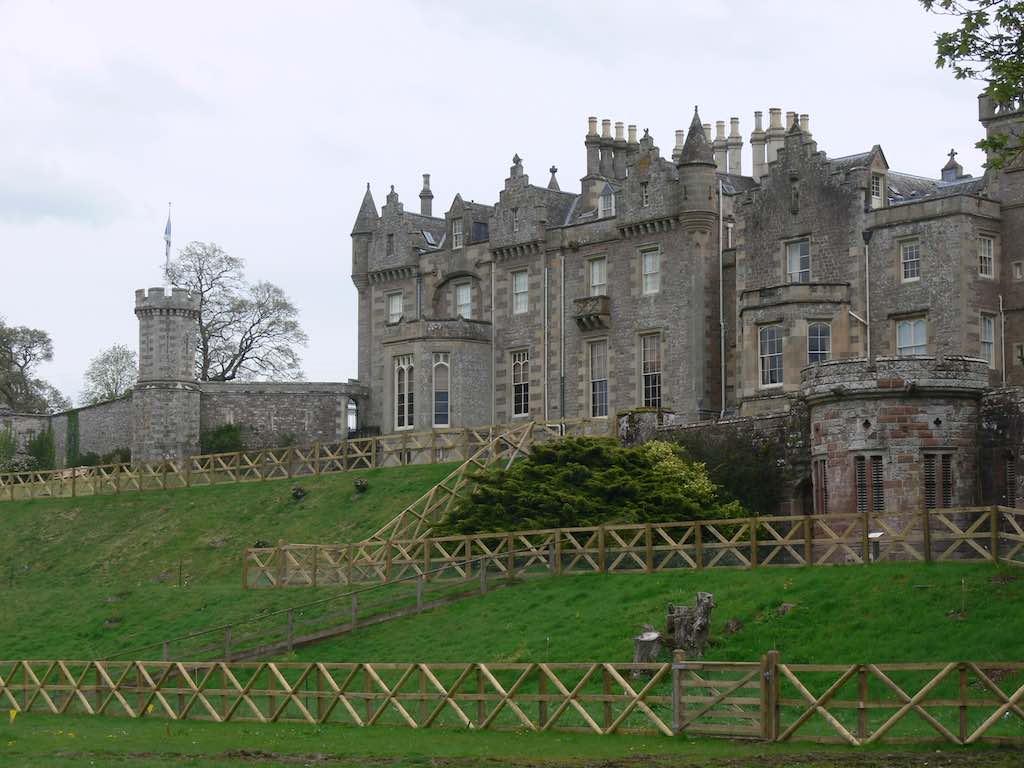Scotland has produced many great authors, but few so celebrated and prolific as Sir Walter Scott, the first Scot to be acknowledged as a best selling author nearly 200 years ago.
He is most remembered for his masterly novels Waverley, Ivanhoe and Rob
Roy in which he demonstrated an ability to write convincing dialogue in both Scottish and English idioms.
Scott was knighted not for his novels but for finding the Scottish crown jewels which had gone missing for over more than years. He also masterminded the 1822 visit of King George IV to Edinburgh, the first visit of a monarch to Scotland’s capital for over 100 years.
George wore a kilt over flesh-coloured tights and began the popularisation of highland dress.
While Scott’s novels were a success, his financial affairs were not. He had become a partner in a printing and publishing firm owned by James and John Ballantyne.
By 1813 this firm was hovering on the brink of financial disaster. Scott saved the company from bankruptcy, but from that time onward everything he wrote was done to pay off his debts.
He eschewed bankruptcy considering that his creditors should not suffer because of his bad investment
Scott is also remembered for his promotion of Scottish culture and nationhood while supporting the political union with England.
Abbotsford, his romantic mansion, nestles in the Scottish borders near Melrose. Built nearly 200 years ago it was built as a family home, work space and private museum and his interests can be seen in the gothic architecture and interiors jam-packed with fascinating curios, artefacts, books and stories that inspired his greatest poems and novels.
If you wander round his house with an audio guide you will hear an actor impersonating the great man himself, explaining about his life, work and family.
It is a great place to learn about Scott’s life and achievements or wander through the beautiful formal gardens and tranquil woodlands of the estate.
Scott was also a law officer – sheriff-depute of Selkirkshire – as well as an author. For this he needed to spend part of the year in easy reach of the courtroom in Selkirk, so he spent legal terms in Edinburgh and legal vacations in the country.
In 1811 he bought his own property ‘on a bare haugh and bleak bank by the side of the Tweed’. He immediately renamed it Abbotsford, after the ford across the Tweed below the house used in former times by the monks of Melrose Abbey.
With money flowing in from his poetry and early novels, he was able to expand the estate from 110 acres to 1400 within a few years and as money continued to pour in he demolished the original farmhouse to make room for a large rectangular building housing an entrance hall, a new study, a library and a drawing room. John Smith of Darnick, a local stonemason, was hired as the principal builder and Scott acted as his own clerk of works.
After Scott’s death, his descendants continued living in and making changes to parts of the house until 2004, having kept the historic rooms of the house open to the public since early 1833 – five months after Scott’s death.

A visitors centre, restaurant and interpretation centre, all owned by the Abbotsford Trust provide facilities for visitors.


































